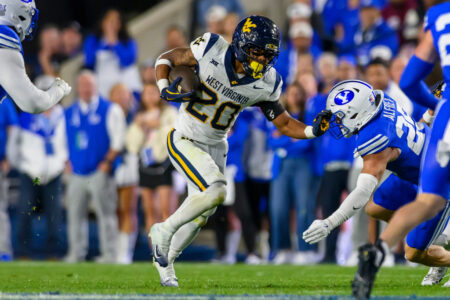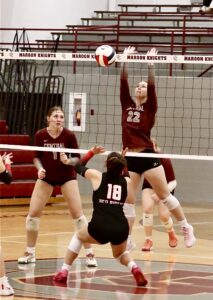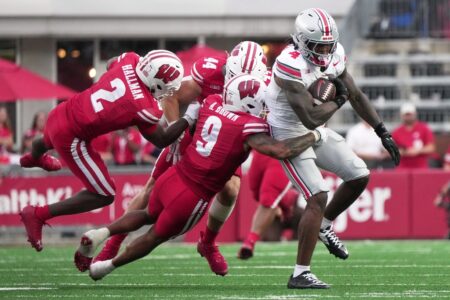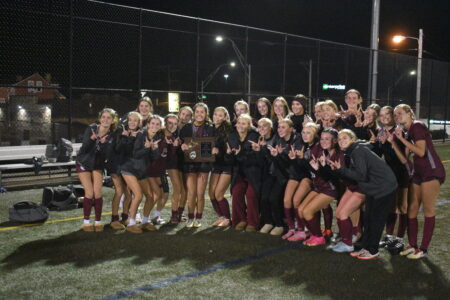Struggling In Short Yardage, WVU Has Unorthodox Plan

West Virginia running back Diore Hubbard (20) runs the football defended by BYU safety Talan Alfrey (25) during the first half of an NCAA college football game, Friday, Oct. 3, 2025, in Provo, Utah. (AP Photo/Tyler Tate)
On West Virginia’s second drive of the game, after just going three-and-out, Rich Rodriguez kept the offense out on the field and lined up to go for it on a fourth-and-1 on its own 34-yard line. After the game, Rodriguez said if it’s fourth-and-1, he’d like to go for it.
WVU lined up in a quarterback sneak position. Quarterback Scotty Fox Jr. took the snap and pushed behind his offensive line, but TCU pushed back more. The Horned Frogs got the stop and had the ball on WVU’s 34-yard line.
“You have to be able to convert the short yardage stuff,” Rodriguez said during his weekly press conference. “That was the most frustrating part of it.”
In the second quarter, WVU went for it again on fourth-and-short and didn’t get it. The Mountaineers were 2-for-7 on fourth down.
Immediately, the blame goes towards the offensive line for not getting enough push up front, and left tackle Nick Krahe took accountability for the fourth-and-short issues.
“We just need to get more push up front,” Krahe said. “It’s fourth-and-1, we need to get that yard.”
Multiple offensive linemen might not show full effort on those types of play calls. Former Philadelphia Eagles center and Super Bowl Champion, Jason Kelce, said the quarterback sneak was the most taxing play call on the body.
Krahe actually enjoys those plays.
“I think it takes a lot of grit, and it’s kind of fun,” Krahe said. “Being an offensive lineman, you gotta do the dirty work. You don’t get a lot of recognition for it. I think the fourth-and-1 kind of shows who you are as a person, how you play. So I think that’s a big thing.”
Rodriguez explained it’s not just on the offensive line, though. The tight ends need to do their part, the wide receivers, the running backs and the play calling all need to be in sync to pick up the needed yard or two.
The technique needs to be better, too.
“Doing a little better job coming off the ball,” Rodriguez said. “Whether it’s a wide out, tight end or O-line. Just coming off the ball with a little more urgency. There were times we did that in the last game, but some key times where we didn’t, that’s what we’ll continue to work on.”
Rodriguez did come up with an idea to help. WVU is without both experienced running backs Jahiem White and Tye Edwards for the rest of the season, and the current backs, Diore Hubbard and Cyncir Bowers, are smaller, so they are missing a big back that’d help on the fourth-and-1s.
So, sophomore pass rusher Curtis Jones, who is 6-foot-4, 226 pounds, has taken reps at running back.
“We thought about doing it last game because he’s a bigger guy,” Rodriguez said. “But, we haven’t given him enough reps to be totally comfortable with that. He’ll get more reps in practice this week at running back to try to help that situation. We just haven’t been live with him. He’s played a lot on defense and special teams. Today, he’ll get more reps at running back than he had last week, for sure.”
It doesn’t matter how WVU figures it out; the Mountaineers just need to convert more fourth downs, especially if Rodriguez continues to go for it. WVU picks up a couple of those fourth-and-shorts, and maybe it picks up a win.
“To win the game like that, you got to be able to convert the short yarder stuff,” Rodriguez said. “We didn’t do a good job with that.”





